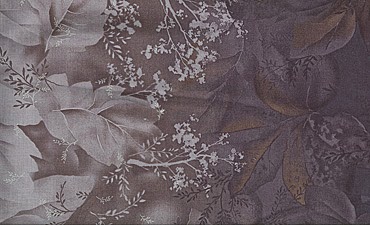I told Paula Nadelstern that I would be in New York City and she told me of a couple of exhibits that I should go see.
And like the good girl that I am, I did follow her advice. I first went the American Folk Art Museum, where they are currently featuring an exhibit titled "Self-Taught Genius." This exhibit runs through August 17. In it were many types of art, from quilts, to embroidery, to painting, to woodwork, metal work and more. And all these pieces were put together by artists who taught themselves how to do whatever it was displayed.
Here's what the museum says their exhibit is about:
Self-Taught Genius considers the shifting implications of a self-taught ideology in the United States, from a widely endorsed and deeply entrenched movement of self-education to its current usage to describe artists creating outside traditional frames of reference and canonical art history. Self-taught art, past and present, blurs frontiers between disciplines, makes definitions look constricted, and forces us to reconsider our assumptions about authoritative systems. These individuals have been active participants in the shaping of American visual culture, influencing generations of artists and establishing lively artistic traditions. Recast as self-taught geniuses, they fit within a pervasive but mutable self-taught culture, reflecting life in America as it has changed and as it has been ambitiously dreamed.
For example - this embroidery piece below was done by a 9-year old girl sometime in the 1800s. As you know back then all girls were taught to embroider and do some sort of sampler, the alphabet, possibly their home, numbers, etc. This piece is not thought to be a sampler - but simply a pastoral scene of most likely her home. Look at how tight her embroidery work is, look at the detail, look, just look... Truly an incredible piece by one so young.

Another piece, a quilt also done in the 1800s, came from the home of a Southern Great Lady of Kentucky. It was once thought that the quilts found in southern homes were made by "the lady of the house." However, that was not always correct. Many of these quilts were made by their slaves, such as this one below. Several slaves worked on this particular one. Slaves did not have any idle time. The women slaves did their assigned chores by day, and quilted (or sewed) by night. This was also something I recently learned of from Sue Monk Kidd's book THE INVENTION OF WINGS.
The next piece I'll show you is a wedding quilt, made by a man for his adoptive daughter. This log-cabin style quilt contains over 31,000 pieces and uses both silks and cottons.
Last but not least - Paula Nadelstern had one quilt hanging in this exhibit. This one was done in 1995. It is a series of off-centered mandalas, surrounded by many kaleidoscope orbs. It is always truly amazing to see one of her quilts - the tiny pieces she puts into it to create the effect she's looking for. She also uses both cotton and silks in this quilt - the silks because they shine and can create the illusion of dichroic glass.


















